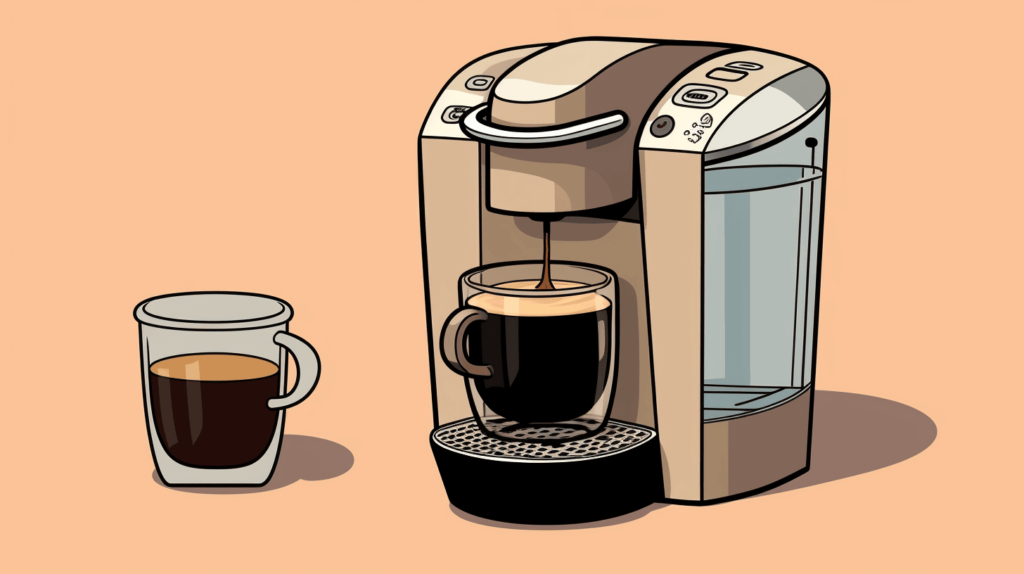Coffee serves as a must-have wake-up boost, perfect for those groggy mornings. A great cup of coffee helps energize you for the day ahead and prepares your mind for the numerous tasks at hand. Using K-Cup pods are the easiest way to get that refreshing and stimulating brew essential to jumpstart your day.
However, if you know your coffee, it's not news to you that not all cups are created equal. The caffeine in your K-Cup varies greatly with the brew you're putting into your Keurig machine.
So, whether you need to power through with an energy boost to make it through the day or just need your caffeine fix, there is a K-Cup that can suit your tastes.
In this guide, I'll talk about how much caffeine is in a cup of Keurig Coffee and the factors that affect the caffeine content in each cup. Keep scrolling to know more.
Related: Best K Cups for Iced Coffee

How much caffeine is in a K-Cup?
While the question may be simple, the answer may be tricky as many factors determine the caffeine content in a K-Cup.
Different K-Cup brands and flavors are on the market, so the answer also varies. On average, a K-Cup pod contains 75 to 150 mg of caffeine per 250 ml cup.
However, other factors must be considered to determine the exact caffeine content in each K-Cup, like roast level, grind size, weight, and type of coffee beans used.
Related: Best Hot Chocolate Keurig K Cups
What Affects the Amount of Caffeine in a K Cup?
1. Roast Level
It's a common misconception that dark roasts have more caffeine than light roasts. This is because dark roasts have bold and robust flavors.
However, light roasts actually have slightly more caffeine than dark roasts because they are roasted for the shortest amount of time.
The amount of time they are exposed to heat affects the caffeine levels. The roasting process results in the shrinking of the beans and a reduction in their mass. The difference in mass determines the difference in the caffeine levels.
If you want to consume less caffeine, switching to light roasts is best.
2. The Weight
Each K-Cup is different in terms of roast and weight. Weight is another factor that determines the caffeine content of K-Cup pods.
After roasting, the coffee beans are measured based on weight and volume.
Generally, 85 mg of caffeine is present in 10 mg of coffee.
To calculate the caffeine content of your K-Cup, look at the packaging and check the coffee's weight in your K-Cup. Use 85 mg of caffeine per 10 mg of coffee to compute the caffeine content of your K-Cup.

3. Grind Size
The grind size also determines the caffeine content. The finer the grind, the higher the caffeine content. This is because finer grounds have more surface area, allowing more water to pass quickly, resulting in more caffeine extracted in the final cup.
In most K-Cup pods, fine grounds are used.
4. Type of Coffee Beans Used
The coffee bean used also affects the average strength of your coffee. Arabica and Robusta coffee are among the popular coffee types used worldwide.
Robusta has a higher caffeine content. Robusta plants grow in conditions with more pests and insects because these plants thrive in warmer, wetter, and more humid conditions. These conditions allowed the robusta plants to develop a natural defense against pests and insects: caffeine.
If your K-Cups contain Robusta coffee, they are higher in caffeine content than K-Cups with Arabica coffee.

Recommended Daily Caffeine Intake
According to the FDA, up to 400 mg of caffeine is generally safe for most healthy adults. This is equal to 4 cups of regular-strength K-Cups.
However, different people have different sensitivities to caffeine and how fast they metabolize it. People who don't regularly drink caffeine tend to be more sensitive to it, which may make them feel jittery.
Which Keurig K-Cup coffee has the most caffeine?
If you're worried about the afternoon slump, the energizing elixir in Devil Mountain Coffee Black Label has got you covered.
Self-titled as the world's strongest coffee, the full-bodied but smooth roast is flavorful and will supply you with the energy you need without the jitters. It contains 1555 mg of caffeine, which is six times more than what an average cup contains.
Are K-Cups stronger than drip coffee?
K-Cups are generally weaker in flavor and caffeine content than drip coffee. K-Cups usually contain 75 to 100 mg of caffeine per 8-ounce cup. When using a Keurig, the coffee is soaked with water for just seconds. The shorter the extraction time, the lower the caffeine and the weaker the flavor.
On the other hand, Drip coffee takes 5 minutes to complete an average pot. The longer the time the water has to extract the flavors, the stronger the coffee will be.
FAQs
Can I use my own coffee in a K-Cup?
Yes. If you have a reusable coffee filter, you can use your own coffee in a K-Cup. However, ensure that your K-Cup Universal Reusable Coffee Filter is compatible with your Keurig machine.
How much caffeine is in Starbucks Keurig cups?
Starbucks K-Cups are made of Arabica coffee beans. However, the caffeine content depends on the roasting process.
Starbucks Caramel Flavored K-Cups, for example, contain 120 mg of caffeine, and Starbucks Breakfast Blend K-Cups contain 110 mg of caffeine.
Can you use K-Cups twice?
No. K-Cups are designed to be used only once. If you use K-Cups twice, you'll get a weaker cup of coffee. In addition, the coffee becomes over-extracted, making it taste bitter.
The Takeaway
Coffee is an energizing elixir that's part of the everyday lives of most of us. Whether you just want a sip of a good cup of coffee or you want to stay awake through the night if you have so much work to do, coffee is good company.
However, not all coffees are created equal. Their caffeine levels vary depending on many factors, such as the type of coffee beans used, roast level, grind size, and weight.
On average, K-Cups contain 75 to 150 mg of caffeine per 250 ml cup. K-Cup pods come in different brands and flavors, so read the packaging carefully to determine the caffeine content.
